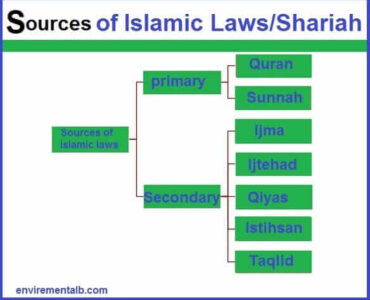
The Lesser Crusades
War Against Saaremaa (1206–61)
The last Estonian county to hold out against the invaders was the island country of Saaremaa (Ösel), whose war fleets had continued to raid Denmark and Sweden during the years of fighting against the German crusaders.
In 1206, a Danish army led by king Valdemar II and Andreas, the Bishop of Lund, landed on Saaremaa and attempted to establish a stronghold, without success. In 1216 the Livonian Brothers of the Sword and the bishop Theodorich joined forces and invaded Saaremaa over the frozen sea. The Oeselians retaliated by raiding German-held territories in Latvia the following spring. In 1220 a Swedish army led by king John I of Sweden and the bishop Karl of Linköping captured Lihula in Rotalia in Western Estonia. The Oeselians attacked the Swedish stronghold later the same year and killed the entire garrison, including the Bishop of Linköping.
In 1222, the Danish king Valdemar II attempted a second conquest of Saaremaa, this time establishing a stone fortress housing a strong garrison. The stronghold was besieged and surrendered within five days, the Danish garrison returning to Revel while leaving Bishop Albert of Riga’s brother Theodoric and others behind as hostages for peace. The castle was leveled by the Oeselians.
In 1227, the Livonian Brothers of the Sword, the town of Riga, and the Bishop of Riga organized a combined attack against Saaremaa. After destruction of Muhu Stronghold and surrender of Valjala Stronghold, the Oeselians formally accepted Christianity.
After the defeat of the Livonian Brothers of the Sword in the Battle of Saule in 1236 fighting again broke out on Saaremaa. In 1241 the Oeselians once again accepted Christianity by signing treaties with the Livonian Order’s Master Andreas de Velven and the Bishopric of Ösel-Wiek. This was followed by a treaty signed in 1255 by the Master of the Order, Anno Sangerhausenn, and, on behalf of the Oeselians, elders whose names were phonetically transcribed by Latin scribes as Ylle, Culle, Enu, Muntelene, Tappete, Yalde, Melete, and Cake. The treaty granted the Oeselians several distinctive rights regarding the ownership and inheritance of land, the social order, and the practice of religion.
Warfare erupted in 1261 as the Oeselians once more renounced Christianity and killed all the Germans on the island. A peace treaty was signed after the united forces of the Livonian Order, the Bishopric of Ösel-Wiek, and Danish Estonia, including mainland Estonians and Latvians, defeated the Oeselians by capturing their stronghold at Kaarma. Soon thereafter, the Livonian Order established a stone fort at Pöide.
On July 24, 1343, the Oeselians arose yet again, killing all the Germans on the island, drowning all the clerics, and besieging the Livonian Order’s castle at Pöide. After the garrison surrendered the Oeselians massacred the defenders and destroyed the castle. In February 1344 Burchard von Dreileben led a campaign over the frozen sea to Saaremaa. The Oeselians’ stronghold was conquered and their leader Vesse was hanged. In the early spring of 1345, the next campaign of the Livonian Order ended with a treaty mentioned in the Chronicle of Hermann von Wartberge and the Novgorod First Chronicle.
Saaremaa remained the vassal of the master of the Livonian Order and the Bishopric of Ösel-Wiek until 1559.
Wars Against Curonians (1242–67)
Couronian Lands
Following the defeat of the Estonians, the crusade moved against Curonians and Semigallians, Baltic tribes living to the south and west of the Daugava river and closely allied with Samogitians.
In July 1210 Curonians attacked Riga. After a day of fighting, the Curonians were unable to break through the city walls. They crossed to the other bank of the Daugava to burn their dead and mourn for three days. In 1228 Curonians together with Semigallians again attacked Riga. Although they were again unsuccessful in storming the city, they destroyed a monastery in Daugavgriva and killed all the monks.
After the defeat of Estonians and Osilians in 1227, the Curonians were confronted by Lithuanian enemies in the east and south, and harassed by the Livonian Brothers of the Sword from the north; in the west, on the sea-shore, their arch-enemies, the Danes and Swedes, were lurking, waiting for opportunity. In this hopeless situation, further aggravated by a famine, the Curonians preferred to try to make peace with the Christian conquerors, inviting the monks into their country thereby escaping attacks by the Scandinavian nations. In 1230 the Curonians in the northern part of Courland, under their ruler (rex) Lammechinus [lt; lv], signed a peace treaty with the Germans, and the lands they inhabited thus became to be known as Vredecuronia or Peace Courland. The southern Curonians, however, continued to resist the invaders.
In 1260, the Curonians were involved in the Battle of Durbe, one of the biggest battles in Livonia in the 13th century. They were forced to fight on the crusader side. When the battle started, Curonians abandoned the knights. Peter von Dusburg alleged that the Curonians even attacked the Knights from the rear. The Estonians and other local people soon followed the Curonians and abandoned the Knights and that allowed the Samogitians to gain victory over the Livonian Order. It was a heavy defeat for the Order and uprisings against the crusaders soon afterwards broke out in the Curonian and Prussian lands.
Curonian resistance was finally subdued in 1266, when the whole of Courland was partitioned between the Livonian Order and the Archbishop of Riga. The Curonian nobles, among them 40 clans of the descendants of the Curonian kings, who lived in the town of Kuldīga, preserved personal freedom and some of their privileges.
War Against Saaremaa (1206–61)
802 – 047
https://Discerning-Islam.org
Last Updated: 03/2022
See COPYRIGHT information below.


